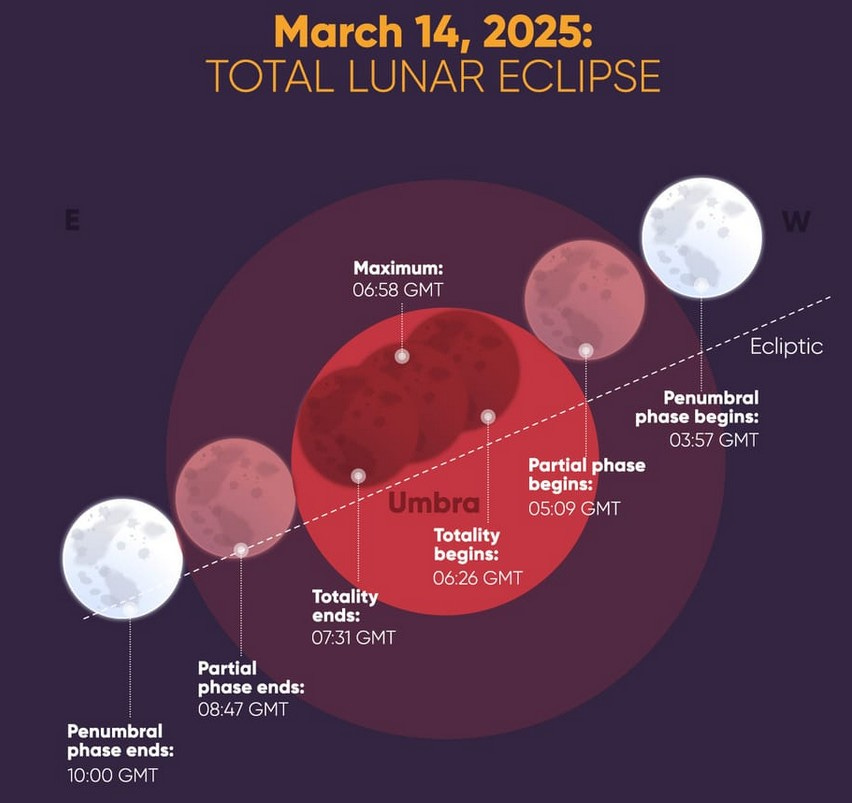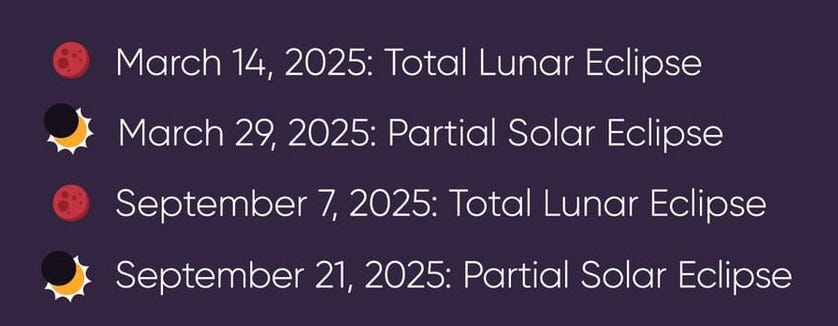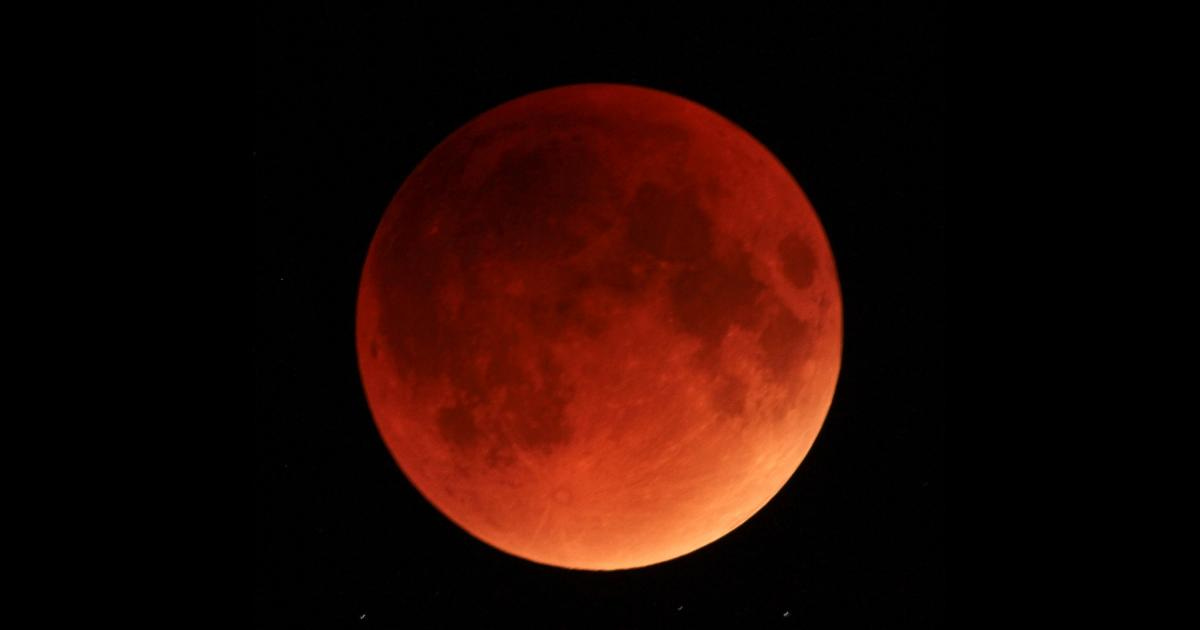Are you familiar with "eclipse seasons"?
The heavens literally align at least four times a year.
Do you remember where you were on April 8, 2024? (Haha! Who can even clearly recall last month?) Nearly one year ago, it was hard to escape the hype around the total solar eclipse from Mexico to Canada. Millions of people found themselves in - or close to - the path of totality (where the Sun is completely eclipsed by the Moon) from Texas to Maine.
People were so excited it was almost like we don’t have eclipses every six months. [Pause] Wait, what?
OK, that was a bit misleading. The April 2024 (and August 2017) total solar eclipse was momentous because it was visible to millions of people across the United States. Even though eclipses occur regularly, they can’t always be seen (e.g., when they happen over unpopulated areas like the Pacific Ocean). So even though they occur regularly, being able to view an eclipse is kind of rare.
What is an Eclipse?
Perhaps the simplest explanation is that an eclipse occurs when one celestial body obscures the light (partially or totally) of another. A more technical definition is that it’s when the light of one celestial body is obscured by the passage of another, either between it and the observer or between it and its source of illumination. The last part of that sentence distinguishes between our solar and lunar eclipses.
Solar Eclipses
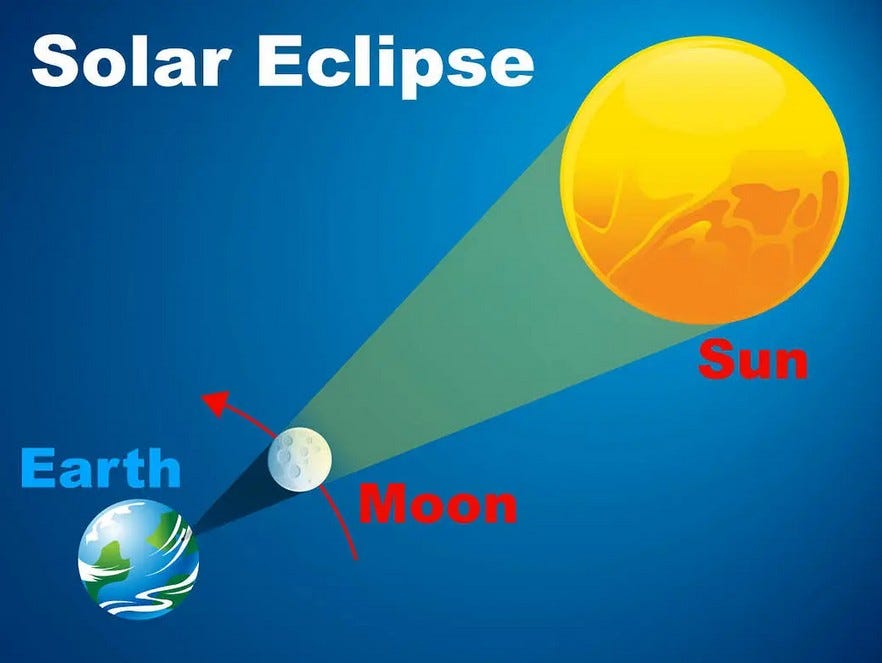
A solar eclipse occurs when the Moon moves between the Earth and the Sun (aka a New Moon), obscuring part or all of the Sun and casting a shadow upon the Earth. Types of solar eclipses are:
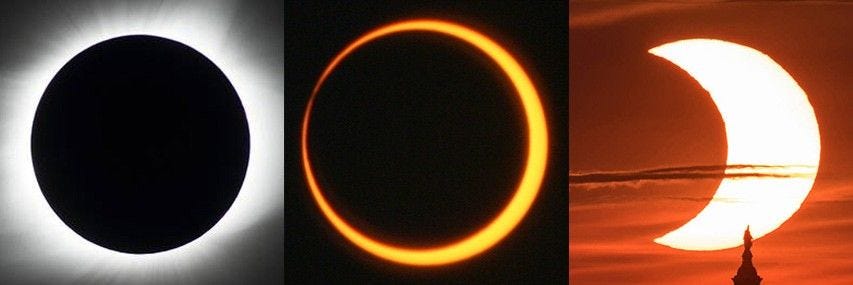
Total: The Sun is completely obscured by the Moon and the sky turns dark.
Annular: Also known as a “ring of fire.” When the Moon is farther away from the Earth in its cycle, it appears smaller and doesn’t quite cover the Sun, leaving the edges exposed.
Partial: An imperfect alignment means only part of the Sun is covered, giving it a crescent shape.
Hybrid: Sometimes an eclipse can shift between annular and total as it moves across the curve of the Earth.
Let’s pause a moment to reflect on how AMAZING it is that the Moon can perfectly cover the Sun. To do so, it needs to appear roughly the same size as the Sun when viewed from Earth. Coincidentally (if you believe in such things), the Moon is 400 times smaller than the Sun, AND about 400 times closer to Earth than the Sun is - meaning that here on Earth, the Moon and Sun appear to be about the same size in the sky.
If we know how something works, is it any less wondrous? Perhaps it is even more so.
Lunar Eclipses
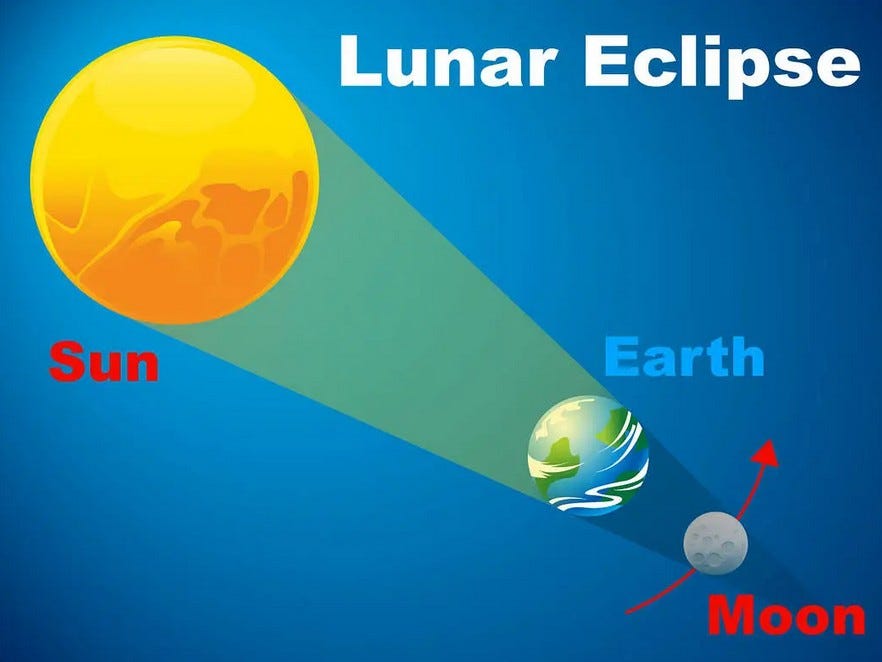
A lunar eclipse happens when the Earth is between the Sun and the Moon (aka a Full Moon) and casts its shadow on the Moon. Types of lunar eclipses include:

Total: A perfect alignment where the Moon moves into the inner part of the Earth’s shadow, or the umbra.
Partial: An imperfect alignment where the Moon passes through just a part of the Earth's umbra. The shadow never entirely covers the Moon.
Penumbral: Easy to miss. An imperfect alignment where the Moon barely dims as it only passes through the Earth’s penumbra, or fainter outer part of the shadow.
What is Eclipse Season?
I first heard the term “eclipse season” a few years ago on a podcast and thought, “Whaaaat? How can I be today-years-old and just finding this out?” It made sense to me that there would be an eclipse cycle, but I didn’t realize eclipses occur with enough regularity to be seasonal. Here are some key facts about eclipse seasons:
Eclipse season happens about every six months (173.3 days to be precise) and lasts about 35 days.
During this 35-day period, at least one lunar and one solar eclipse occurs.
During eclipse season, eclipses are guaranteed — somewhere in the world. (The Earth and Moon will align with the Sun as they orbit, resulting in one lunar and one solar eclipse.)
Essentially, an eclipse happens whenever the Sun, Earth and Moon are aligned. Therefore, lunar eclipses can only happen during full moons (Earth is between Sun and Moon) and solar eclipses can only happen during a new moon (Moon is between Sun and Earth).
We don’t have eclipses every time there is a new or full moon. Because the Moon’s orbit is inclined by 5 degrees to Earth’s ecliptic, it’s often a little too far north or south to line up precisely with the Earth and the Sun in space. (That’s the quickie version. For a great explanation on the Moon’s movements and the 18-year Saros cycles of eclipse families (again, whaaaat?), check out this 5-minute video.)
Still, conditions are right for eclipses twice during the calendar year. The graphic below shows two eclipse seasons occurring in one year (i.e., one Earth orbit around the Sun), when there is perfect alignment between the three celestial bodies.
Even when everything does line up, other conditions must be met to see eclipses. For lunar eclipses, the Moon also has to be above the horizon and during or close to night, which rules out the half of Earth that is experiencing daylight. Solar eclipses can be seen only from or adjacent to a narrow path along the Earth’s surface.
When are the eclipse seasons in 2025?
We are in the first 2025 eclipse season now, and it’s a biggie for North America! Chances are you’ve heard about this week’s total lunar eclipse. It has been over two years since our last visible total lunar eclipse, and the duration of totality is longer than usual at just over an hour. It’s also late: the totality starts at 2:26 AM Eastern (Friday Mar 14) and 11:26 PM Pacific (Thursday Mar 13).
The March 13/14 total lunar eclipse is the first one of the 2025 eclipse season. The next eclipse this season will be a partial solar eclipse on March 29. Note that there is both a lunar and solar eclipse and they are within a 35-day window.
The next eclipse season occurs in September, about six months away. In this season, there will be another total lunar eclipse on the 7th and a partial solar eclipse on the 21st. (These won’t be visible in North America.)
How might our ancestors have viewed eclipses?
Ancient cultures around the world passed down stories in oral tradition that explain (mostly solar) eclipses. Although the characters and circumstances differ, some mythological or folkloric themes are more prominent:
The Sun is being chased or eaten. Examples: Javanese, Andean, Choctaw (traditionally Mississippi, now Oklahoma), ancient China, Vietnam, Norse, Pomo (northern California), and Kwakiutl (west coast of Canada).
The Sun and Moon embrace and unite. Examples: Navajo (American southwest), ancient German, Tahitian.
The god(s) are angry or displeased with humans. Examples: Ancient Greeks, Inca, Transylvanian, Biblical passages, Mesopotamian, Babylonian.

Having enough food (hunting/eating), children (mating/reproduction), and being in right relationship (whether with Source, the natural world, or each other) were essential for human survival. These stories explained the world in a way that could be understood by everyone (like the parables used by Jesus).
It makes sense that more dire predictions are associated with solar eclipses. During a total solar eclipse, the temperature drops up to 10 degrees, animal behavior shifts, and the stars appear. Life on Earth depends on the Sun. You can just imagine how terrifying an eclipse would be if you didn’t know it was coming, how long it would last, or why it was happening.
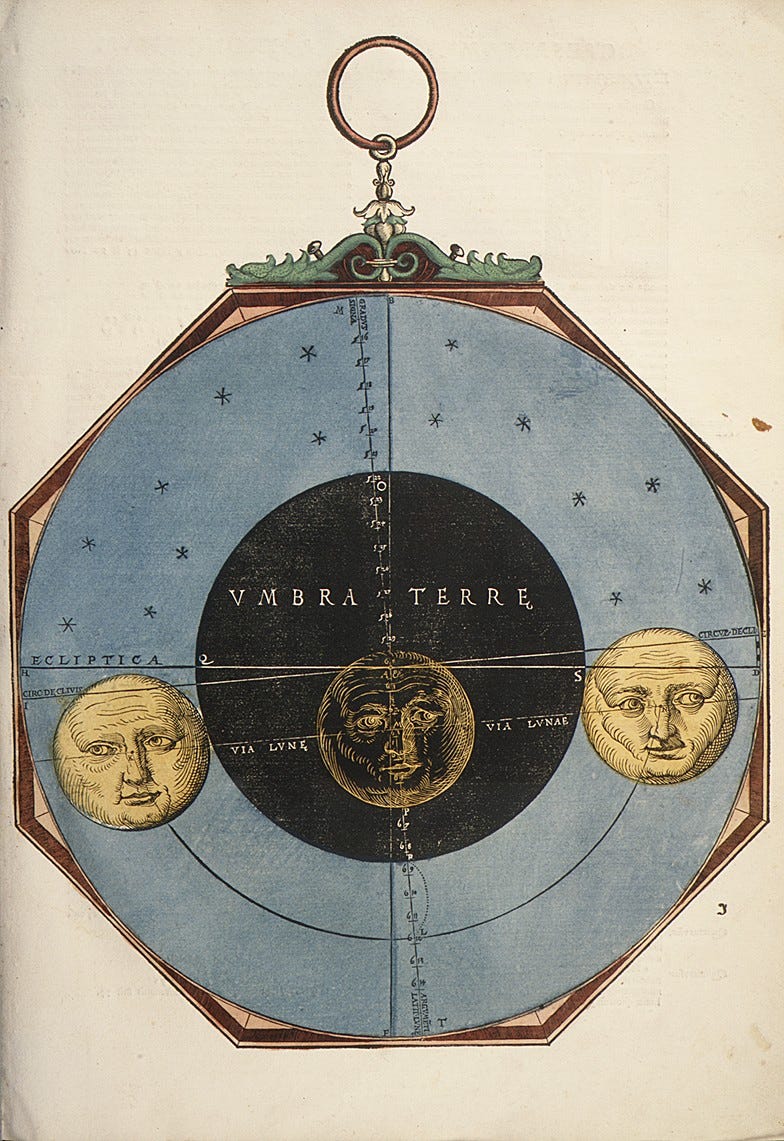
For ancient astronomers (in many cultures), the technical and symbolic meanings of the heavenly alignments were intertwined. They used their full knowledge of the sky (star positions and countless years of observation of Earth and human events) to predict and “interpret” eclipses. Worldwide, eclipses signified times of change, transformation, endings and beginnings. The changes might not occur immediately, but just like eclipse seasons, they were guaranteed.
Are you planning on viewing tonight’s eclipse? Sure, you might lose some sleep. But it’s a wondrous event to witness - even if it just means peering out your bedroom window during totality. Regardless of whether you view the eclipse, you can still use its timing to contemplate what is happening within and around you.
This eclipse occurs as the Northern Hemisphere is transitioning into spring, which is also the time of Imbolc. What endings (inner and outer) are you witnessing or experiencing? What beginnings are stirring, awaiting, maybe not quite here but definitely on their way? It’s often more challenging to notice the small telltale signs of the new when the endings are especially loud. But they are always there, guaranteed.
Happy eclipse-gazing!
References, and for more information:
Caela Barry (2025, February 26). What you need to know about the March 2025 total lunar eclipse. NASA. https://science.nasa.gov/solar-system/moon/what-you-need-to-know-about-the-march-2025-total-lunar-eclipse/
Fred Espenak (Retrieved 2025, March 8). Lunar Eclipse Basics. Eclipsewise.com. https://www.eclipsewise.com/lunar/LEhelp/LEbasics.html
Bruce McClure (2024, September 9). The 1st eclipse season of 2025 is in March. Earthsky. https://earthsky.org/astronomy-essentials/definition-what-is-an-eclipse-season/
Joe Rao (2025, March 9). What will happen during the total lunar eclipse of March 2025? Space.com https://www.space.com/total-lunar-eclipse-march-2025-stages-explained-what-to-expect
Dennis Zotigh (2024, April 5). What Indigenous Americans believe about eclipses. Smithsonian Magazine. https://www.smithsonianmag.com/blogs/national-museum-american-indian/2024/04/05/indigenous-americans-believe-about-eclipses/
Exploratorium (Retrieved 2025, March 6). Eclipse stories from around the world. https://www.exploratorium.edu/eclipse/eclipse-stories-from-around-the-world
Institute of Physics (Retrieved 2025, March 12). Extraordinary behavior of the Moon. https://www.iop.org/explore-physics/moon/extraordinary-behaviour-moon
Starwalk.space (2025, March 3). Total Lunar Eclipse on March 13-14, 2025: Visibility Map and Timeline of the Blood Moon. https://starwalk.space/en/news/total-lunar-eclipse-march-13-14-2025
Starwalk.space (2025, February 18). 5 Upcoming Eclipses. https://starwalk.space/en/infographics/when-is-the-next-eclipse
Timeanddate.com (Retrieved 2025, March 11). Total Lunar Eclipse on Jan 1, 2048: Map & Times. https://www.timeanddate.com/eclipse/map/2048-january-1
Written March 2025.





